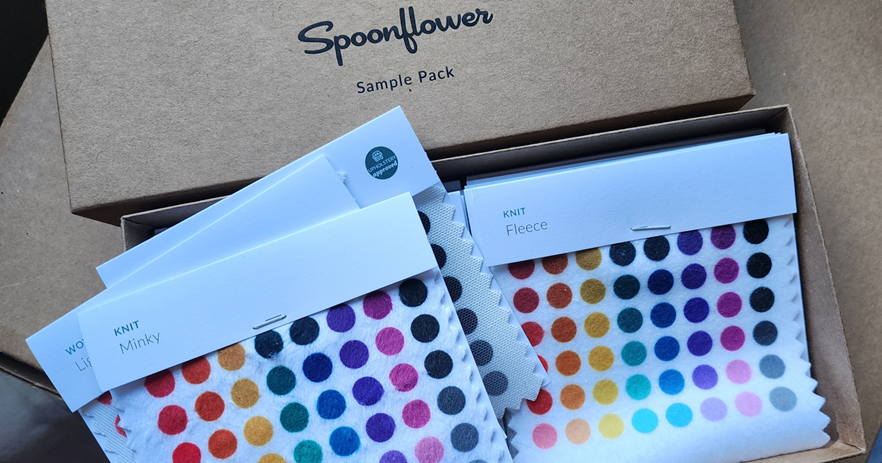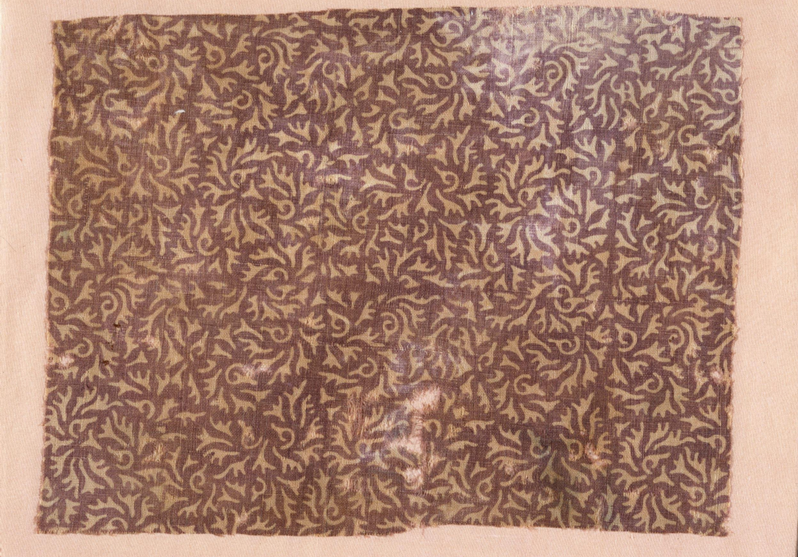Now you can dive into the deep pool of the Victoria and Albert Museum’s online collections and own this superpower whenever you want a spark of inspiration.
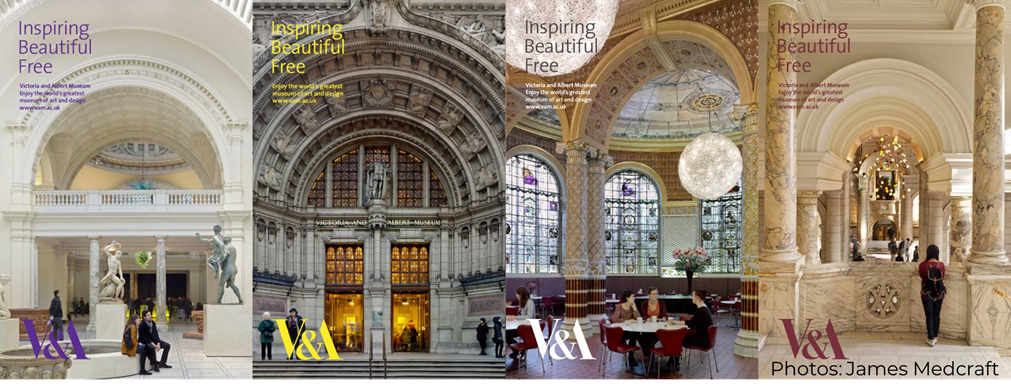
If you’ve ever visited the museum in person, you already know the pleasure of browsing around the “family of art, design and performance museums, where everyone is invited to enjoy the power of creativity.” If you haven’t yet had the pleasure, you won’t regret the time invested in beginning to explore the V&A Digital Collections–inspiration at your fingertips.
This post will arm you with the basics of how to bring this intense treasure chest of art, craft and culture to your desktop or phone.
It all starts with the home page at vam.ac.uk. At the time of this writing, the Diva exhibition is making the home page navigation a bit hard to read, but you can find the Collections button in the top navigation bar, or in the three-bar menu on mobile.

The Collections button will take you to the main Collections page. Scroll down to see currently featured categories.

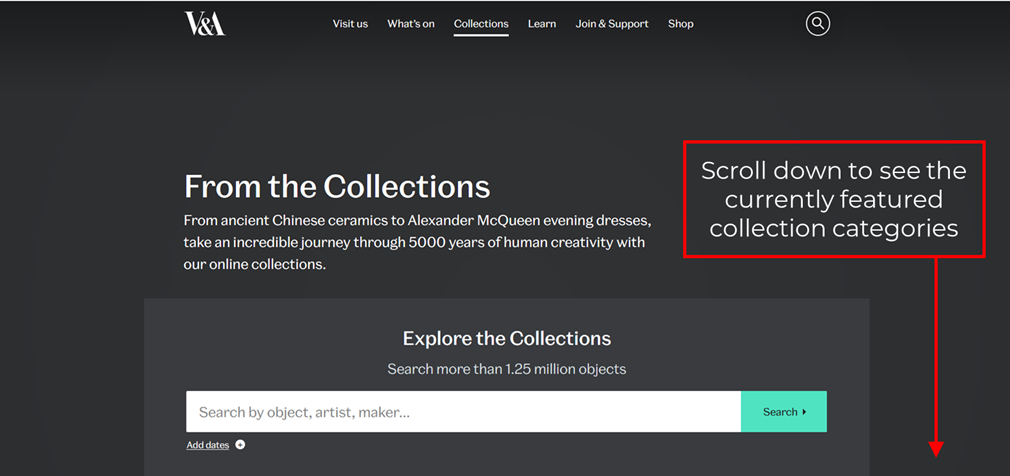
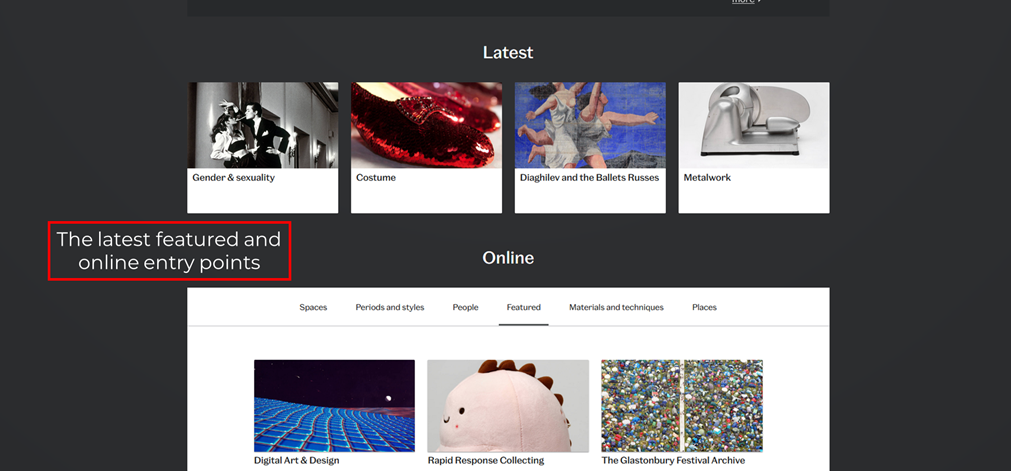
There are 2 main ways to proceed from here: via the search function or using filters.
1 – Using the Search function
Let’s start by going back up into the search bar and entering a topic of interest. As a fabric geek, I’ll look for textiles.
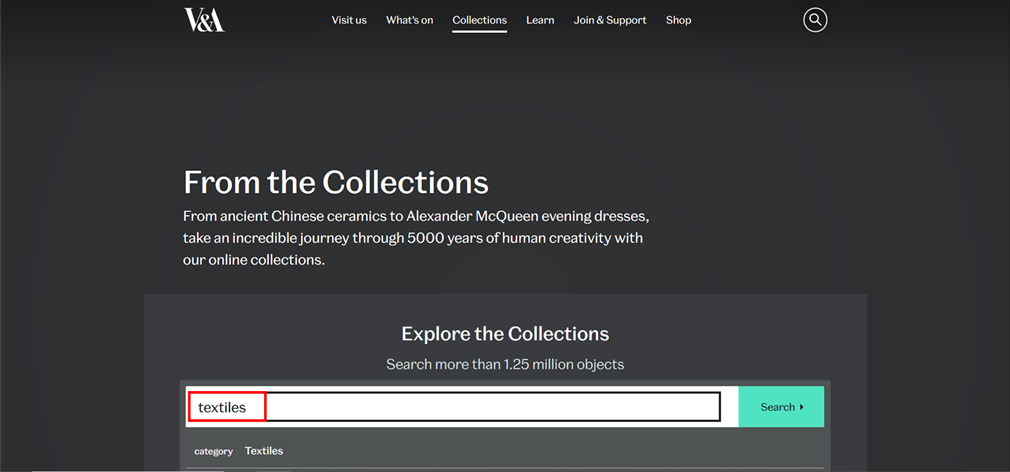

That’s a pretty broad search term. I can see by the text below the search box that I’ve chosen to look for a category defined in the system. To further focus your search, you could add additional keywords to your search term.
But as an example, let’s follow this path to the endpoint. The next option will be whether you want all the results, see only objects currently on display, or narrow choices to only show the objects that have images. That’s the one I normally choose.

Now I can visually scroll through the objects in the collection.

The brief label information displays the fabric’s date and manufacturer. Clicking on the image brings up the swatch with full details about this swatch visible by scrolling down the page.
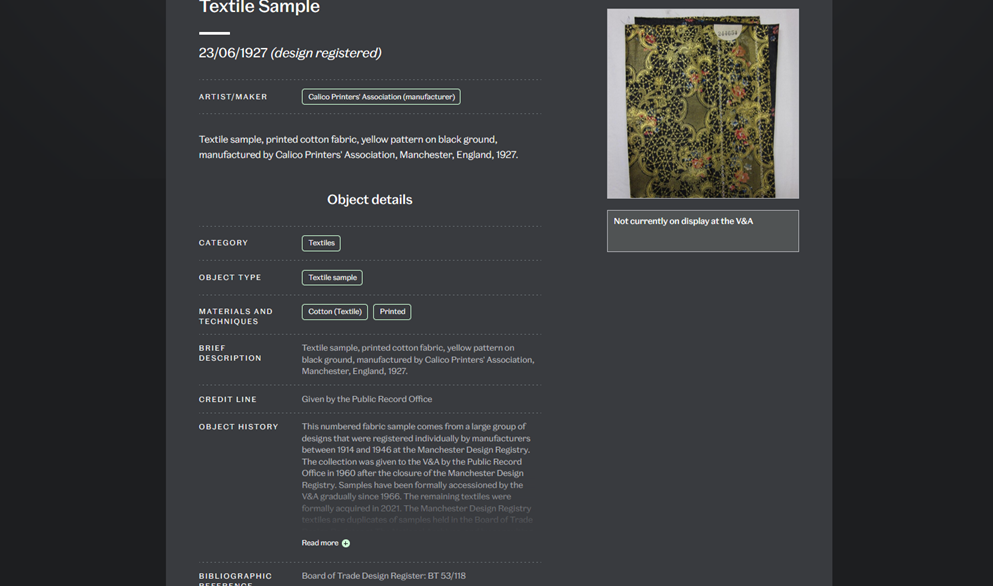
To look at the object more closely, scroll back up to the top of the object page to use the + or – controls to zoom in or out. On mobile, you’ll need to click the object in order to zoom in and out or download.
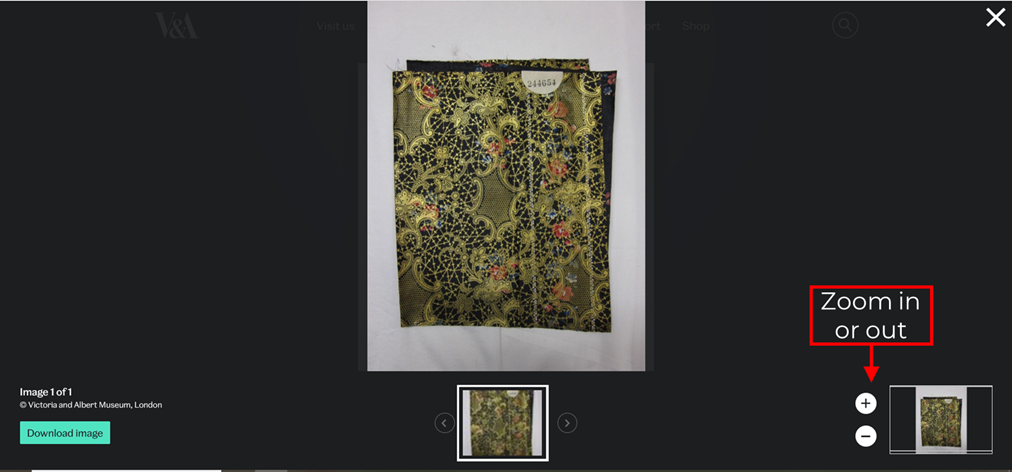
Here’s the enlarged detail:

At any level of detail, you can choose to download an image.
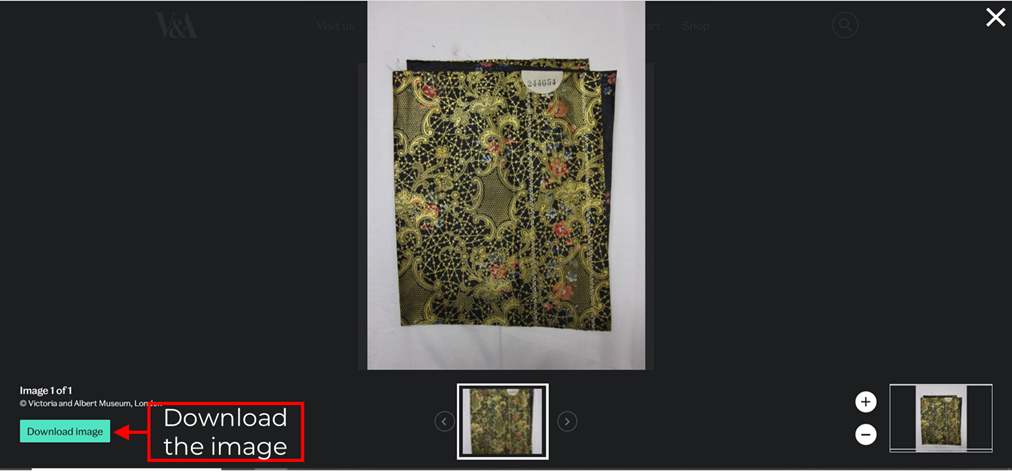
You’ll be able to see the exact terms of use for images in the collection and give your agreement. If the image requires licensing, the button will say “License image” instead of download, and the resulting popup will include instructions on how to proceed.

Now that you’ve seen the basics of using the Search tool, it’s time for the other powerful way to access objects in the collection: using the filter options in the left navigation rail.
2 – Browsing with filters.
Scroll back up to the top of the page and click the Collections tab. Click the Search button with nothing in the Search window.

…which will result in offering you all the objects in the collections, with a list of the filters you can use in the left navigation bar. On mobile, click “Show filters” in the top right to bring up this list.
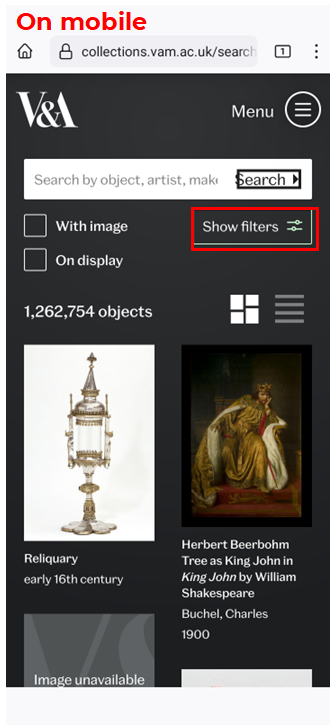
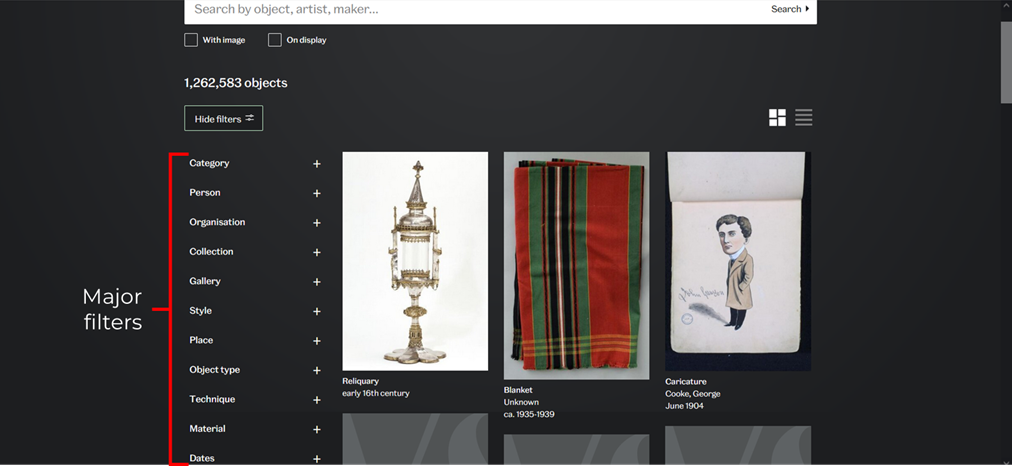
Over a million objects in the collection! The + (plus sign) to the right of each filter will pull up a list of options.
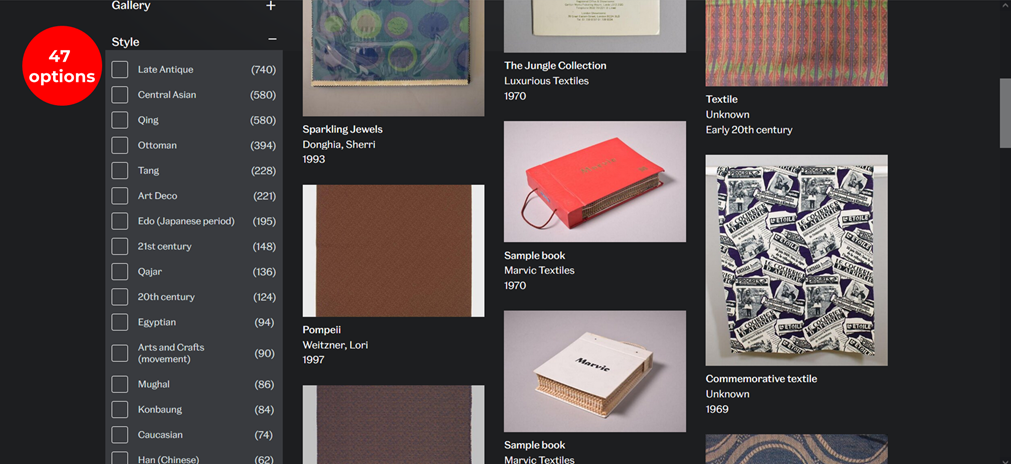
The style filter has 47 options, for example. And you can choose multiple filters to refine what you’d like to see.
This result has 3 filters applied to show only Qing dynasty saucers from Ceramics Room 139, The Curtain Foundation Gallery:

You can see how powerful the filters can be.
The third way to access the digital collections is to combine methods 1 and 2.
3 – Combining search and filters
It’s straightforward–just start with a search term and then choose the filters you want to apply to the result.
Here, I started with a search for “stuffed” and then applied filters for glove puppets from Great Britain:

So that’s all there is to it. Easy, right? Three powerful ways to get into the digital collections and find treasures to spark your creativity–I hope you’ll try them. If you’re interested in learning more about the kind of thinking and planning that goes on behind the scenes in continuing efforts to make the vast collection accessible, here’s a great read.
Please let me know if you have any special objects to share, or other museums whose digital collections you appreciate. Happy hunting!



